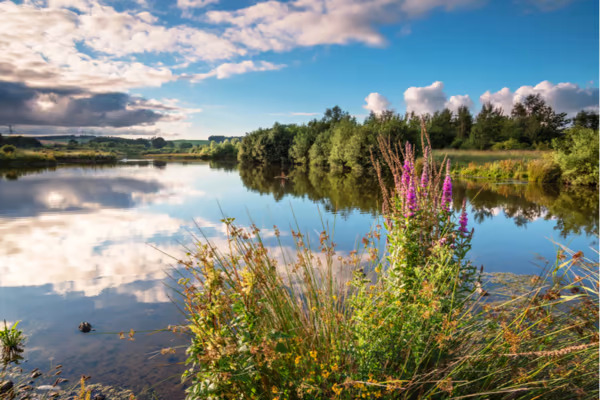As the world population is expected to reach 9 billion people by 2050, we need to increase our food production by 70 percent to be able to feed everyone. But more importantly, we need to figure out ways to do it sustainably.
Traditional agriculture won’t cut it because of growing water scarcity as a result of climate change. While this freshwater crisis is most acute in the Sub-Saharan and Sub-Indian regions, it is also present in countries with a rainier reputation. In the UK, for example, this year’s average annual rainfall was half of what it is usually expected.
Knowing that things are only likely to get worse, a farm on Scotland’s West Coast is using seawater from the Atlantic Ocean to grow its vegetables. The project is led by Glasgow-based startup Seawater Solutions, which has figured out a way to replace freshwater with saltwater to grow food.
Growing sea vegetables with seawater
“We take this land, whether it’s degraded farmland or flood-affected lands, and we then build an artificial saltmarsh ecosystem where we can extract food at the same time,” Yanik Nyberg, founder of Seawater Solutions, tells Euronews Green. “We’ll pump seawater over this area, sometimes we flood it, and then we’ll begin to grow saline plants.”
The food grown on the farm mainly consists of a type of vegetation called halophytes. Halophytes are plants that thrive in salty environments, such as saltwater typically found in semi-deserts and seashores.
In addition to using them for food, Halophytes can also be used as raw materials for animal fodder, biofuels, and even cosmetics. Not only that, the salt marshes where these plants grow offer coastal protection from flooding and erosion, all while absorbing about 30 times more carbon than rainforests. Seawater Solutions estimates farmers adopting this farming approach could sell carbon credits for about $2,800 per hectare every year.
Growing demand for ocean-sourced vegetables
The Scottish farm where the project took off focuses on species such as samphire and sea aster for food consumption. While these crops are still somewhat of a niche market, UK supermarket Tesco said its demand for samphire surged by 80 percent in 2016, after the halophyte was featured in a famous cooking show.
Nyberg says that Downhill Farm is currently selling its produce for €22-32 ($23-34) per kilo with a yield of 20 tonnes per hectare — that’s 10 times more than what they would grow on traditional farmland. Powered by off-grid, renewable electricity, these artificial salt marshes could provide an environmentally friendly and economically viable solution to feeding the growing population.

